第29章 CHAPTER XII--THE CHEST OPENED(2)
He awoke in the early morning in his bedroom, and looked around him, now clear-headed, in amazement. In its usual place on the strong table stood the great steel-hooped chest without lock or key. But it was now locked. He arose quietly and stole to the turret-room.
There everything was as it had been on the previous evening. He looked out of the window where high in air flew, as usual, the giant kite. He unlocked the wicket gate of the turret stair and went out on the roof. Close to him was the great coil of cord on its reel.
It was humming in the morning breeze, and when he touched the string it sent a quick thrill through hand and arm. There was no sign anywhere that there had been any disturbance or displacement of anything during the night.
Utterly bewildered, he sat down in his room to think. Now for the first time he FELT that he was asleep and dreaming. Presently he fell asleep again, and slept for a long time. He awoke hungry and made a hearty meal. Then towards evening, having locked himself in, he fell asleep again. When he woke he was in darkness, and was quite at sea as to his whereabouts. He began feeling about the dark room, and was recalled to the consequences of his position by the breaking of a large piece of glass. Having obtained a light, he discovered this to be a glass wheel, part of an elaborate piece of mechanism which he must in his sleep have taken from the chest, which was now opened. He had once again opened it whilst asleep, but he had no recollection of the circumstances.
Caswall came to the conclusion that there had been some sort of dual action of his mind, which might lead to some catastrophe or some discovery of his secret plans; so he resolved to forgo for a while the pleasure of making discoveries regarding the chest. To this end, he applied himself to quite another matter--an investigation of the other treasures and rare objects in his collections. He went amongst them in simple, idle curiosity, his main object being to discover some strange item which he might use for experiment with the kite. He had already resolved to try some runners other than those made of paper. He had a vague idea that with such a force as the great kite straining at its leash, this might be used to lift to the altitude of the kite itself heavier articles. His first experiment with articles of little but increasing weight was eminently successful. So he added by degrees more and more weight, until he found out that the lifting power of the kite was considerable. He then determined to take a step further, and send to the kite some of the articles which lay in the steel-hooped chest. The last time he had opened it in sleep, it had not been shut again, and he had inserted a wedge so that he could open it at will. He made examination of the contents, but came to the conclusion that the glass objects were unsuitable. They were too light for testing weight, and they were so frail as to be dangerous to send to such a height.
So he looked around for something more solid with which to experiment. His eye caught sight of an object which at once attracted him. This was a small copy of one of the ancient Egyptian gods--that of Bes, who represented the destructive power of nature.
It was so bizarre and mysterious as to commend itself to his mad humour. In lifting it from the cabinet, he was struck by its great weight in proportion to its size. He made accurate examination of it by the aid of some instruments, and came to the conclusion that it was carved from a lump of lodestone. He remembered that he had read somewhere of an ancient Egyptian god cut from a similar substance, and, thinking it over, he came to the conclusion that he must have read it in Sir Thomas Brown's POPULAR ERRORS, a book of the seventeenth century. He got the book from the library, and looked out the passage:
"A great example we have from the observation of our learned friend Mr. Graves, in an AEgyptian idol cut out of Loadstone and found among the Mummies; which still retains its attraction, though probably taken out of the mine about two thousand years ago."The strangeness of the figure, and its being so close akin to his own nature, attracted him. He made from thin wood a large circular runner, and in front of it placed the weighty god, sending it up to the flying kite along the throbbing cord.